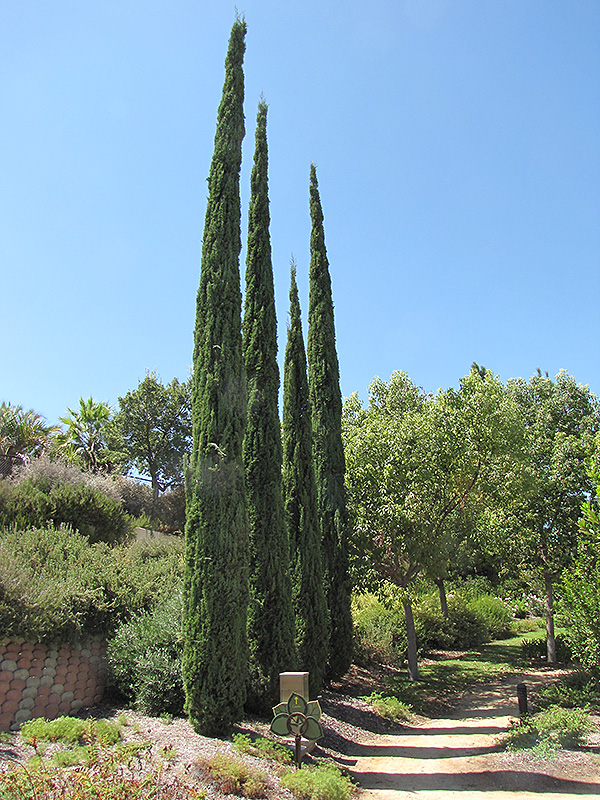Height: 60 feet Spread: 10 feet
Sunlight:
Hardiness Zone: 7b Description: A narrow column that is truly an exclamation point on the landscape; foliage is fine pendulous sprays of gray-green; planted in linear groups, it makes a great screen and a dramatic statement in a large landscape Ornamental Features Italian Cypress is primarily valued in the landscape for its rigidly columnar form. It has attractive grayish green evergreen foliage. The scale-like sprays of foliage are highly ornamental and remain grayish green throughout the winter. Landscape Attributes Italian Cypress is a dense evergreen tree with a strong central leader and a narrowly upright and columnar growth habit. It lends an extremely fine and delicate texture to the landscape composition which can make it a great accent feature on this basis alone. This is a relatively low maintenance tree, and is best pruned in late winter once the threat of extreme cold has passed. Deer don't particularly care for this plant and will usually leave it alone in favor of tastier treats. It has no significant negative characteristics. Italian Cypress is recommended for the following landscape applications; Planting & Growing Italian Cypress will grow to be about 60 feet tall at maturity, with a spread of 10 feet. It has a low canopy with a typical clearance of 1 foot from the ground, and should not be planted underneath power lines. It grows at a fast rate, and under ideal conditions can be expected to live for 60 years or more. This tree should only be grown in full sunlight. It prefers dry to average moisture levels with very well-drained soil, and will often die in standing water. It is not particular as to soil pH, but grows best in sandy soils. It is somewhat tolerant of urban pollution. This species is not originally from North America.![]()
![]()
![]()
![]()
![]()
![]()
![]()
![]()
![]()
![]()
![]()
![]()
![]()
top of page
Louie's Nursery Menifee - Plant Finder
Characteristics
Applications
Features & Attributes
This tool is an online resource representing many of the varieties that we carry over the course of the season, and is intended for informational purposes only. Inventory varies seasonally, so we cannot guarantee that every plant will be in stock at all times - please contact the store directly for current availability. It does not include our entire selection of plants, so be sure to visit our store to see varieties that may not be represented on this list.
bottom of page
